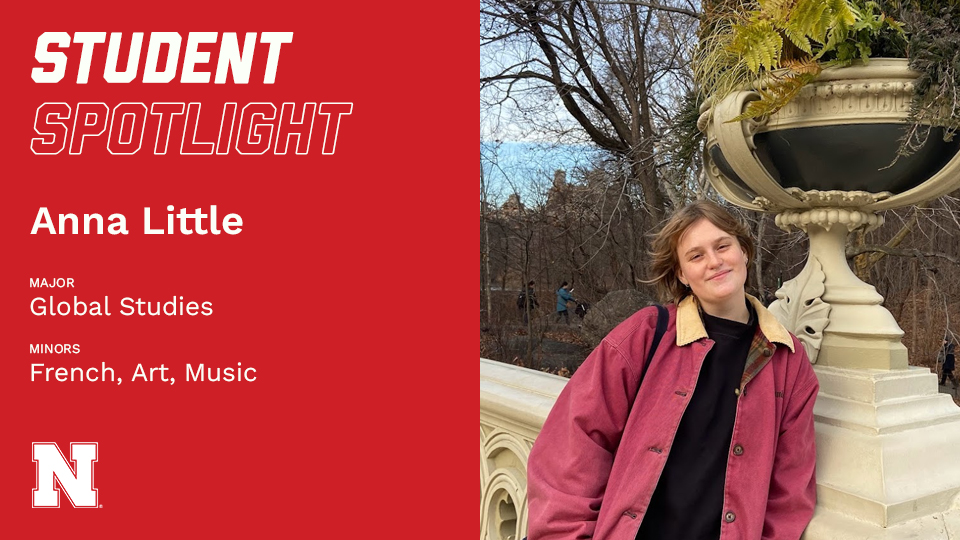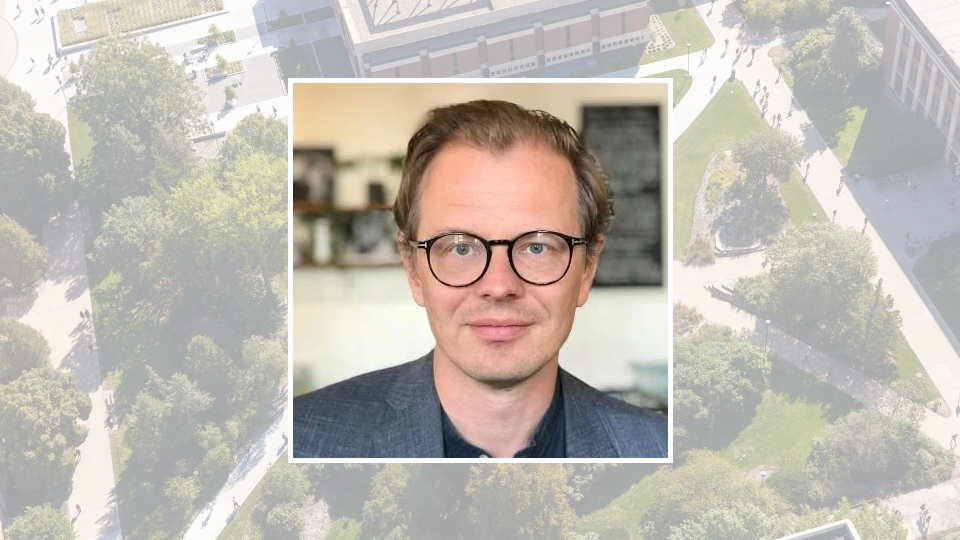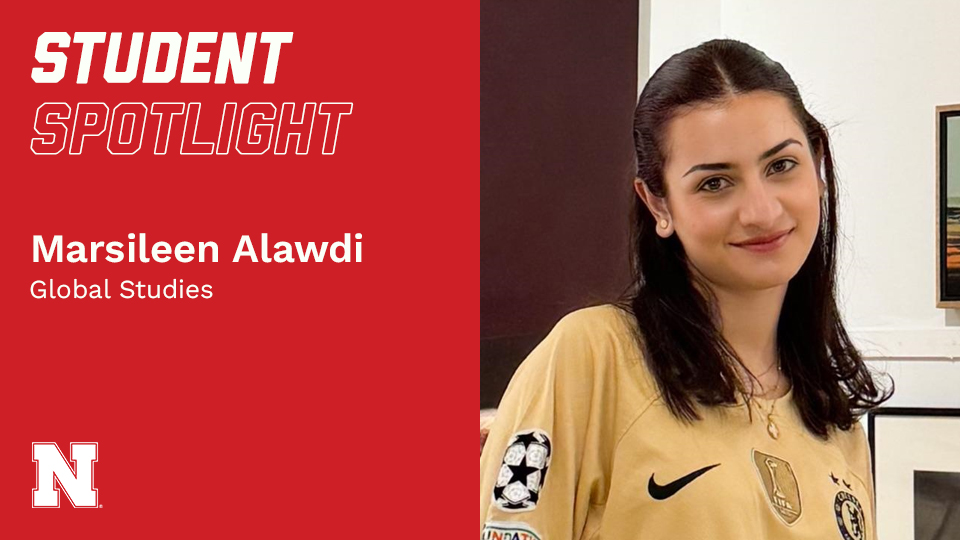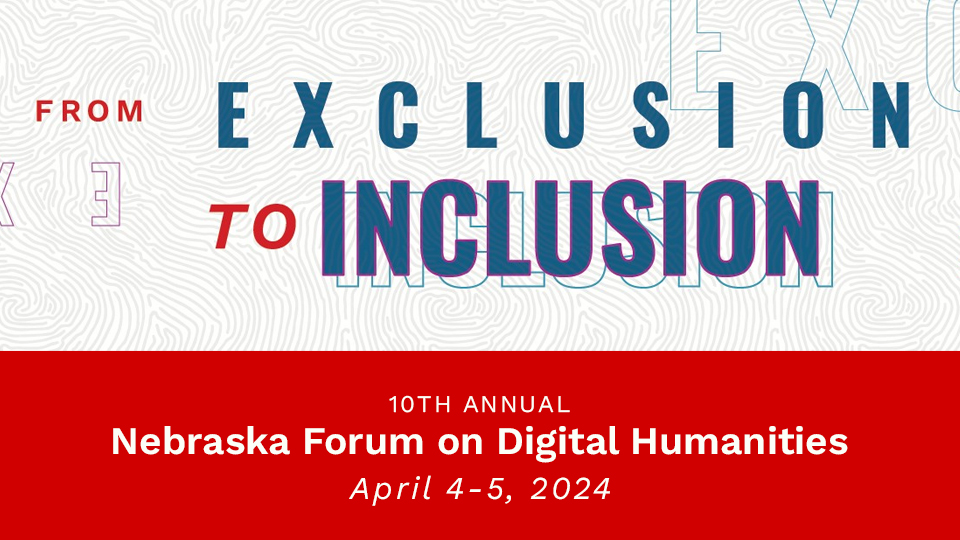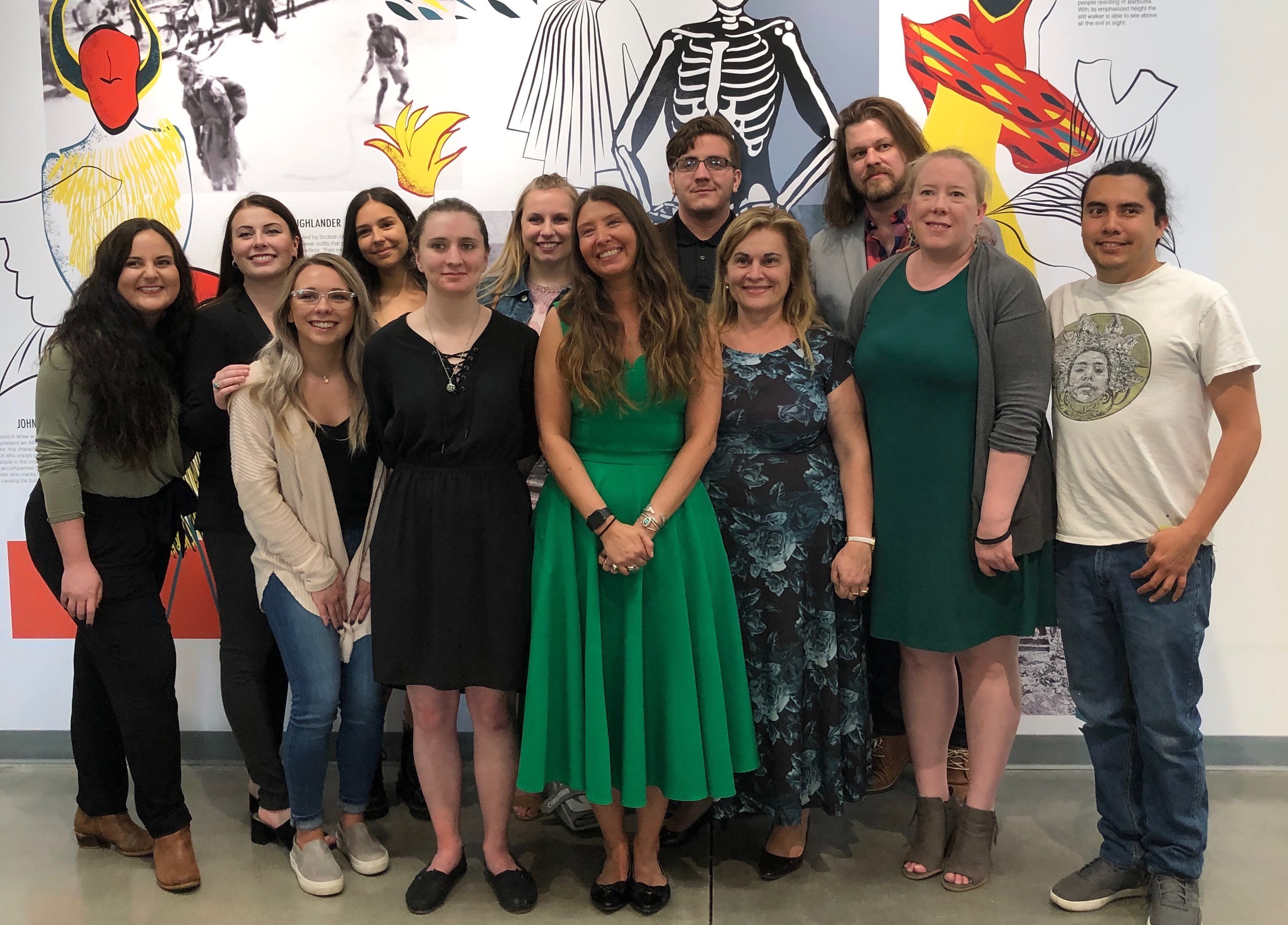
After a semester of hard work, the museum exhibit design classes their exhibit "Carnival as a Form of Resistance" last April. Following the previous year's topic about plant virologist Myron Brakke, this interdisciplinary group displayed the history of Caribana, the Carnival celebration of Barbuda—explaining the festival's early beginnings, connection to ritual, and evolution until the 1950s.
Department of Anthropology chair Sophia Perdikaris suggested the topic, due to her research on the island of Barbuda, and her important connections, including one at the Venice Biennale. After contributing to the 2018 exhibition in the Antigua and Barbuda Pavilion in the Biennale, the group asked her to participate again. Perdikaris saw the invitation as a way for the class's work to reach more audiences.
Collaboration
An exhibit's creation requires an interdisciplinary approach.
"Exhibit content goes beyond a regular paper or written work. By having an interdisciplinary format, students learn to work outside their departmental/academic boundaries in a collaborative way, driven by a common question but using a diverse skill set in bringing everything to fruition," said Perdikaris.
For graduate student Kat Bickart, this was her first time back in the classroom since receiving her bachelor’s degree in Anthropology in 2013. While she herself took research and writing roles in the course, her experience collaborating with students from other disciplines was an added benefit.
“In order to think to do any sort of museum project, it has to be collaborative and interdisciplinary. You're going to need people from the art world to understand visually.”
“There were things that, as an anthro student, I might not know about graphic design or know about the type and how it needs to look. So there was a lot of learning from different components. We weren't just learning from our instructors we learning from one another,” said Bickart.
Exhibit Pieces
Working with the constraints of budget, timeline, and abilities, the class honed in on how they should represent Caribana and Barbuda.
In the end, four main components were constructed:

To show the origins of Caribana, the class included artifacts from the Obia ritual. Slaves used this ritual to protect themselves from their overseers or owners. To battle the ban on traditional religious practices by the colonial establishment, many rituals survived in secret in the caves of the island. These cave rituals eventually morphed into the Caribana celebration with masks and costumes to express disdain and criticize those in power without repercussions.
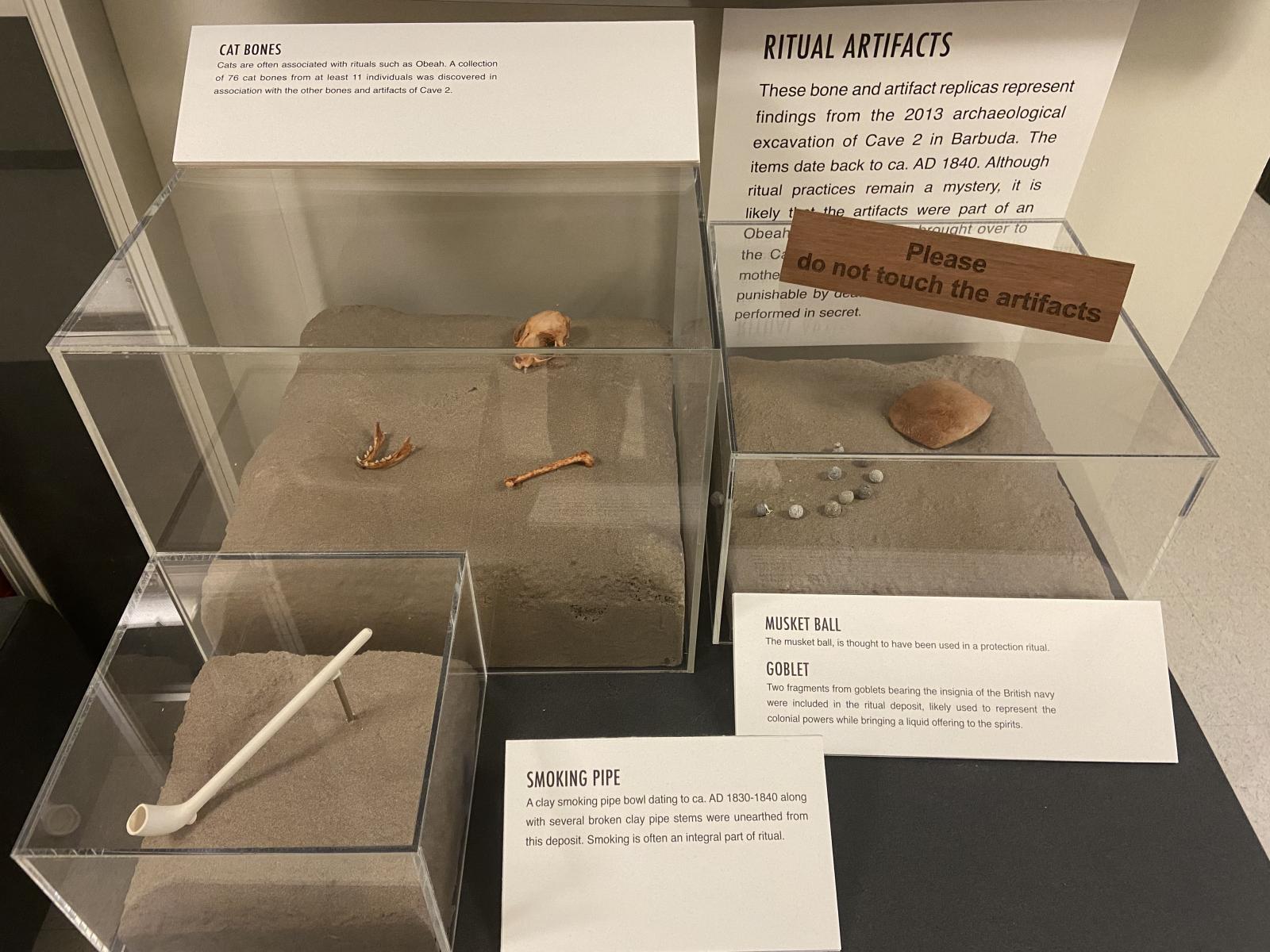
Artifacts from a cave on Barbuda where secret Obia rituals were performed were replicated and displayed. Students created 3D printed cat bones with the help of Innovation Studio, a clay replication of a British Navy glass goblet, reproduction of a smoking pipe, and real musket balls from a different excavation.

To ground their visitors in the physical layout of Barbuda, the class created a 3D topographic map. It included important sites, locations, flora, and fauna of the island. Students researched the island, provided write-ups for each item in the key, and designed the graphics.
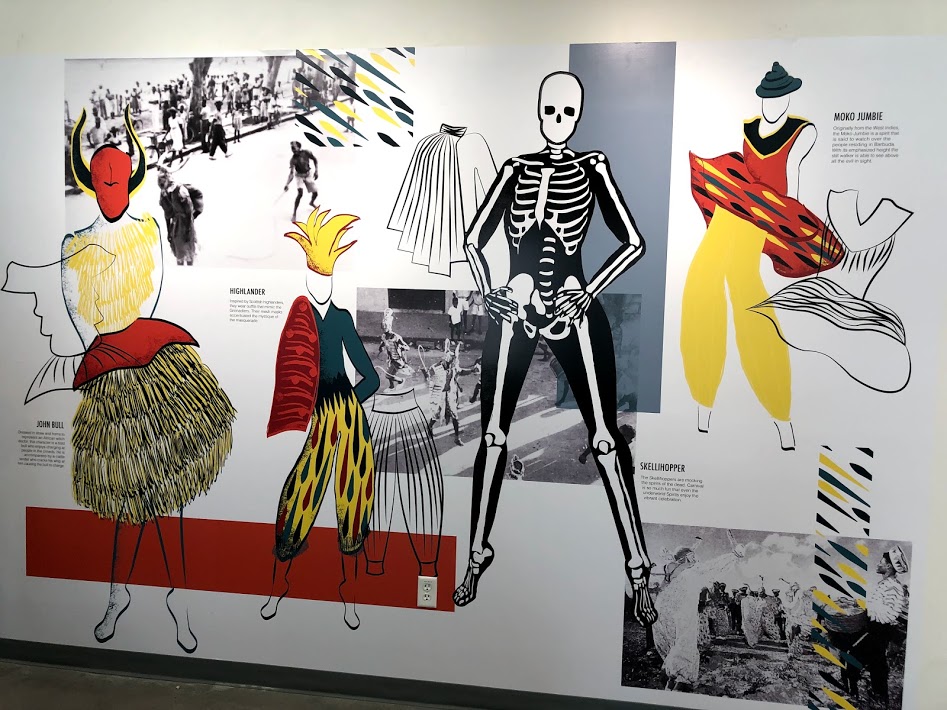
To show the various characters of Carnival, vinyl wall images of popular carnival characters were designed. Anthropology students researched the best characters to use and provided the graphic design students with the cultural context and background knowledge to create an accurate portrayal. Characters included John Bull, the Highlander, SkelliHopper, and Moko Jumbie.
Because masks are a common element of Carnival celebrations, they created a mask to represent them and the island. With the help of local sculptor David Manzanares, students picked a feature of the island or carnival and created small masks that were attached to the main mask. Each student had to provide a write up about why they picked that element and its importance to Barbuda.
The components were not only something to look at. Visitors could also interact with them. Across all the components, the class incorporated an element of augmented reality. By using the Roar app, visitors could scan different parts of the exhibit with their phones to bring up more content such as information, photos, or even a 360 video. Students were tasked with licensing the software and creating the content for the app.
The Finished Product
After a semester of trial and error, their finished exhibit opened on April 25, 2019, at the Innovation Studio. Staying true to the island’s culture, Caribbean food and drink provided by Stur 22 was served and members of the Glenn Korff School of Music’s Nebraska Steel performed a steel drum music. About 50 people visited the exhibit on opening night. Family, friends, and members of the university were invited.
Innovation Studio housed the exhibit for a month and was open to the public. Then the artifacts and a second woodcut mask were sent to Venice and displayed at the Antigua and Barbuda Pavilion at the Biennale.
The course continues to bring hands-on museum experience this semester with its third offering. Headed by Susan Wheeler, director of the NU State Museum of Natural History, the class will evaluate older exhibits and propose new ways to update them.
